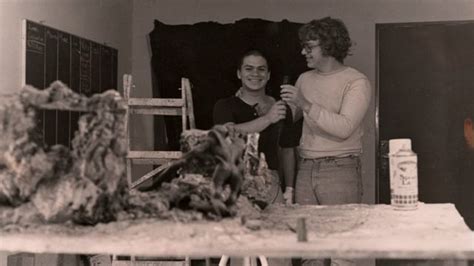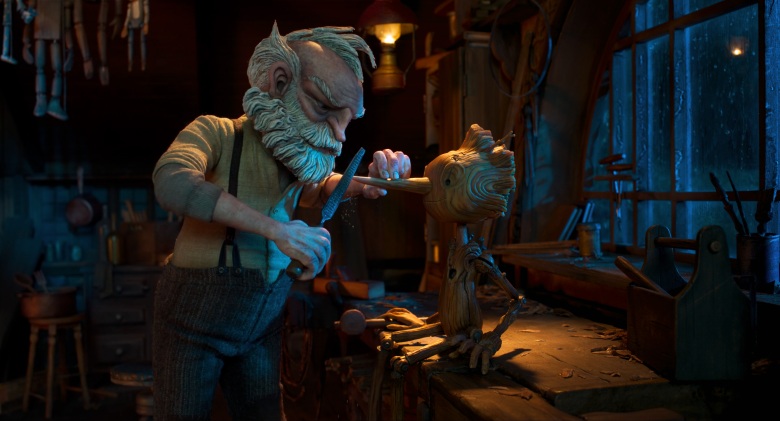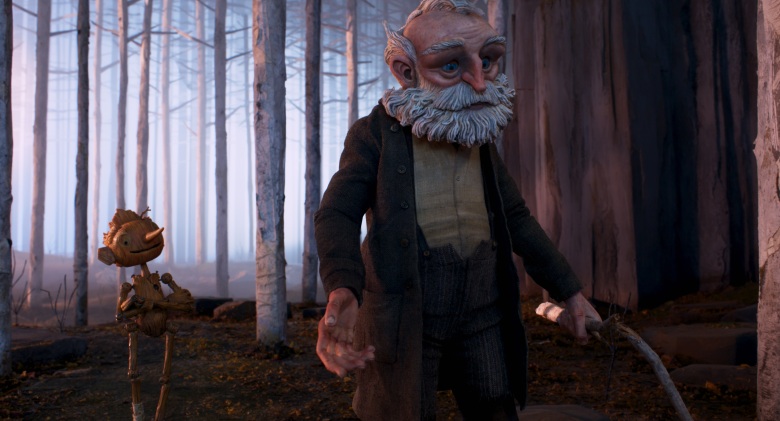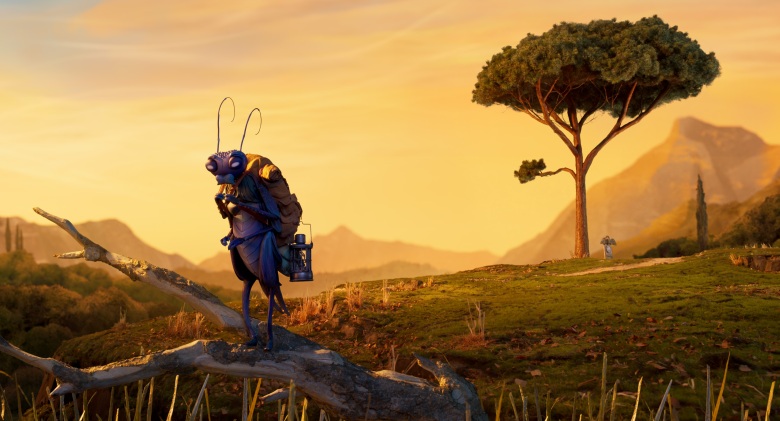Guillermo del Toro spent decades dreaming up his stop-motion version of “Pinocchio.” Now that he’s finally made his animated debut, he has no plans to slow down. Unlike many auteur passion projects given the greenlight by Netflix, this one could open the floodgates for a director keen on making up for lost time.
Over 30 years ago, del Toro was a young makeup and special effects artist in Guadalajara, Mexico, preparing to direct his first feature. The project was a wild, stop-motion animated sci-fi story called “Omnivore,” and the premise read like a rough audition for the revisionist genre epics he would make years later. He was inspired by Mexican stop-motion sculptor Marcel Delgado, whose credits include “King Kong,” to make a very different kind of monster movie.
“It was a very late teens, early 20s, underground comix type of story,” the 58-year-old filmmaker recalled in a recent interview with IndieWire. “Very pop, heavy metal.” It was also loaded with ambition, and written entirely in the Uto-Aztecan language Nahuatl. “Omnivore” focused on the plight of a lizard man born in a land “where everything is savage and trying to eat everything else,” he said. “A bright light in the distant mountains attracts the lizard man. He heads there, falls in love, gets betrayed, and eventually faces a race of monsters that feed an enormous blob at the heart of the mountain — the light of the bonfire, where they cook the flesh of their victims.”
A few days into production, the dreams for “Omnivore” were quite literally crushed when the studio was burglarized, and the clay models were smashed. Devastated, del Toro pivoted to live-action with his celebrated 1993 debut “Cronos.” He kept the storyboards to “Omnivore” for years but lost them after several moves. His aesthetic grew deeper and his narrative interests more advanced, but del Toro’s impulse to work in animation stuck. “Look, this is a medium that has produced some of the most enduring landmarks in cinema,” he said.

Guillermo del Toro prepares to direct “Omnivore” in the early ’90s
The desire to make “Omnivore” was eventually replaced with his version of “Pinocchio,” a story that had fascinated him since childhood. The movie, co-directed by stop-motion veteran Mark Gustafson (“Fantastic Mr. Fox”), delivers del Toro’s predilection for complex childhood fantasy against the backdrop of corruption while injecting it with renewed energy through the singular impact of a world created from scratch.
A frontrunner for the Best Animated Feature, it also stands a good shot at cracking Best Picture as the director crusades for the greater appreciation of the animated form. “I want to focus on animation a lot more,” he said. “It is much more my speed.” His experience with the movie has led him to rethink his entire filmography, including his most acclaimed work. “Could you do an animated version of ‘The Shape of Water?’” he asked, and answered his own question. “I don’t think so. Could you do a version of ‘Pan’s Labyrinth’? Maybe, I think so.”
And then there’s that other passion project. After he won Oscars for Best Director and Best Picture for 2017’s “The Shape of Water,” del Toro took another stab at making “At the Mountains of Madness,” his long-gestating variation on the H.P. Lovecraft novella. Even as an A-lister, he couldn’t get anywhere. The movie was tabled by Universal over a decade ago when it became too much of a costly risk, and nothing had changed since then. In the wake of making “Pinocchio” at Netflix for a reasonable $35 million price tag, del Toro has once again revisited another one that got away.
The filmmaker revealed to IndieWire that he recently spoke with VFX veteran Phil Tippett about translating his original pitch for “Madness” into a stop-motion production along the lines of his latest achievement. “I said it would be ideal to do ‘Mountains of Madness’ as stop-motion,” he said. “You watch the animation in a more rapturous way than live action. It’s almost a hypnotic act, and the relationship to the story becomes more intimate in that way.”

“Guillermo del Toro’s Pinocchio”
Netflix
The animation industry tends to operate separately from the live-action realm. Few major filmmakers have moved between the two forms, and many who have — George Miller with “Happy Feet,” for example — have done it sparingly. To bring “Pinocchio” to the screen the way he envisioned, del Toro charted a new path into a side of the industry that had yet to embrace his talent. “More than a decade ago,” he said, “I decidedly started to turn around very consciously to go back to animation.”
In the early aughts, del Toro approached DreamWorks about serving as a creative consultant on the studio’s upcoming animated slate. “I said that I wanted to learn every aspect of animation,” he said. “I wanted to see the process and get familiar with the animation community in an intimate way.” After advising on everything from “Kung Fu Panda 2” to “Puss in Boots,” del Toro was able to create “Trollhunters,” which was sold to Netflix and lasted two seasons. It also opened the door for del Toro to secure a Netflix deal in 2020 as the streamer’s aspirations to produce more animation swelled. (Netflix has two other animated movies in awards contention this year, also from major directors: Richard Linklater’s “Apollo 10 1/2” and Henry Selick’s “Wendell & Wild.”)
The Netflix deal set del Toro up to proselytize for the potential of animation that went well beyond the market standard for family-friendly entertainment. “If you go back to the birth of animation, whether it’s the trickery of Méliès or Russian animation, it was birthed as an art medium,” del Toro said. “When it started to make a lot of money with repeat audiences that included kids in America, it became geared toward a more pasteurized, homogenized idea. That deprives not only the makers but audiences and studios from exploring its possibilities as spectacle, drama, as a profoundly human experience.”
“Guillermo del Toro’s Pinocchio” functions as a response to that trend. The movie splits the difference between the notion of a children’s fairy tale and the realization that, of course, all children exist in an adult world. Set against the backdrop of WWII-era fascist Italy, this “Pinocchio” finds Gepetto (voiced by David Bradley) grappling with the loss of his son and then struggling to make sense out of the wooden boy he created — in a drunken stupor — coming to life in his studio. “Pinocchio” is as much about a broken father coming to terms with a family bond as it is about the rascally creature (voiced by Gregory Mann) he brings into the world by mistake.
“It is of a piece with my entire filmography,” del Toro said. “If you go back to ‘Cronos,’ the main character is patterned after Gepetto.” There is also plenty of death, which gives rise to poetic beauty and unexpected bursts of hope. Del Toro, whose mother died the day before “Pinocchio” had its world premiere, has been probing these themes for ages. “A lot of the energy of my films is about loss,” del Toro said. “I think I was a premature 70-year-old man when I was 7. I’ve been aging backwards a little into a more joyful state with this one.” He rejected the notion that some of the sadder moments in his version of the story meant that it was a dark movie. “It’s extremely luminous to me,” he said.
Many versions of “Pinocchio” have come and gone since del Toro initially started mulling his own take, including the much-maligned live-action Disney version from Robert Zemeckis earlier this fall. Del Toro said he dodged them all. “I was told recently that there are over 60 ‘Pinocchio’ movies. I cannot testify to that,” he said. “We tried to studiously avoid them. You have your own ideas and don’t want to create static.”

“Guillermo del Toro’s Pinocchio”
Netflix
Del Toro beamed about utilizing camera movement and other production techniques more closely associated with live action in the stop-motion format. “If you think about CG, there’s an entire machine between you and the model,” he said. “You have a mouse and a trackpad or a screen, but you never physically touch the model. We wanted to bring it back to an almost a spiritual thing, like a fantastic invocation.”
He encouraged the puppeteers controlling his models to improvise. “I wanted to see little inputs — the eyes inverting, micro-gestures in the face,” he said. “We directed it so that the animator could interface with that puppet, so they were not just printed faces but had all the vectors of a miniature face. It was almost like clockwork. That creates a connection that is really important between the animator and the puppet. If an act requires six moves in real life, I would say, ‘Do not economize. Do not smooth it out to a fluid little motion.'”
He patterned the approach after the Japanese puppet technique known as bunraku, which finds the puppeteer standing behind the puppet against a black backdrop. “We said, ‘We will credit you as actors upfront with the cast,'” del Toro recalled. “‘We will dictate what you want — make him blink, avert his eyes, scratch his chin — but when we’re shooting, if you come up with an idea between action and cut, try it. The puppet is yours.'”
Del Toro expressed admiration for stop-motion giant Ray Harryhausen while noting that the process has come a long way since the days of “Jason and the Argonauts” and other “dynamation” staples that pasted stop-motion into live action scenes. “He pushed the process technically as far as he could go,” del Toro said. “He could basically marry a plate of the actors with the puppet on a set. But camera movement was limited because there was no such thing as motion control.”
Harryhausen’s animation only dominated the frame for interstitial scenes; he did not direct the movies as a whole. “He would do his little setpieces, which were extraordinary,” del Toro said. “There is no stop-motion animator that wouldn’t quote Harryhausen as the most powerful. But thematically and technically, we can do a lot more now.”
That comes through in “Guillermo del Toro’s Pinocchio,” as its full title suggests. The filmmaker’s touch is visible in every aspect of the story, which is zany and disturbing at once: Pinocchio dies many times over, embraces immortality, then learns of its boundaries. Del Toro’s script went through many drafts and juggles a few too many narrative twists, but it relishes in the eccentricities of Pinocchio’s journey. He ribs a couple of poker-playing rabbits in the afterlife, delivers a scatological performance at the circus for a bemused Mussolini, and staves off the scolding advice of the worldly Sebastien J. Cricket (Ewan McGregor) more than once.
At the same time, Gepetto goes from resentful to concerned for his artificial offspring, as the movie makes a case for an expansive definition of family bonds. It was no coincidence that del Toro’s interest in a “Pinocchio” movie first gained momentum 20-odd years ago, a few years after the birth of his children.

“Guillermo del Toro’s Pinocchio”
Netflix
“I wanted to approach it as a son and as a father, as a child and as a parent,” he said. “What I learned about that process is that I failed to execute a few things, and I did a few things right in both roles. The idea for me is that you trying to make your kid what you want or what you think they should be is a completely failed proposition. As a kid, you can learn to see a parent as a person and not as just a figure.”
He chuckled, concerned that he might be getting too mushy. “Blah, blah, blah,” he said and laughed again. “When you become a father, you start to understand the role of a father,” he said. That theme was injected into many details throughout the movie, from the presence of a crucifix in early scenes to the period setting itself. “The movie is constructed along the sides of several father and son stories — including that of Jesus, and including the darkest paternalistic energy of fascism,” del Toro said. “It’s simply a reflection of that which you gain as you become a more understanding parent or son.”
When del Toro gets personal, he radiates the same charm he brings to discussing his process. He treasures every opportunity to promote his sensibilities, from social media advocacy for fellow filmmakers to producing his new Netflix anthology series, “Guillermo del Toro’s Cabinet of Curiosities,” which he’s using as an excuse to hire directors he admires. Hollywood’s perennial nice guy is a smiley film enthusiast who seems so eager to engage in spirited conversation with colleagues and friends that it’s hard to imagine how he finds time to get anything substantial done — or at least avoid devolving into a mean-spirited mess in the midst of constant exhaustion.
If that side of him exists, he’s reticent to let it out. “I think rage and anger are such overabundant resources already,” he said. “You have hundreds of providers for that.” Twitter has been his way of maintaining an active social network beyond the bubble of the industry. “The accounts I follow and like are people that will point me to a rare movie in the 1930s or a book I have not read,” he said. Like many people, he has grown wary of the platform’s ability to foster a supportive atmosphere and has put more time into his Instagram account. “I am buying a safe house outside of the city,” he said. “I have to be watchful that what I intend to do with Twitter, to promote and put light on things, is done in a medium that stays neutral.”
Wherever del Toro puts most of his promotional efforts in the coming months, they will undoubtedly lean into the dialogue he has fostered about animation’s broader potential. “Animation is not a fucking genre,” he said at the Annecy International Animation Festival over the summer. In pushing for wider appreciation of the medium beyond the animation community, he is making a case for that elusive Best Picture nomination. “I think the conversation is very simple,” he said. “Did we make a movie that moved you or presented something aesthetically powerful? If the answer is yes, then by all means, it should be in the conversation. I think it’s worth trying with this one.”
“Guillermo del Toro’s Pinocchio” is now in limited theatrical release and is available on Netflix beginning Friday, December 9.



